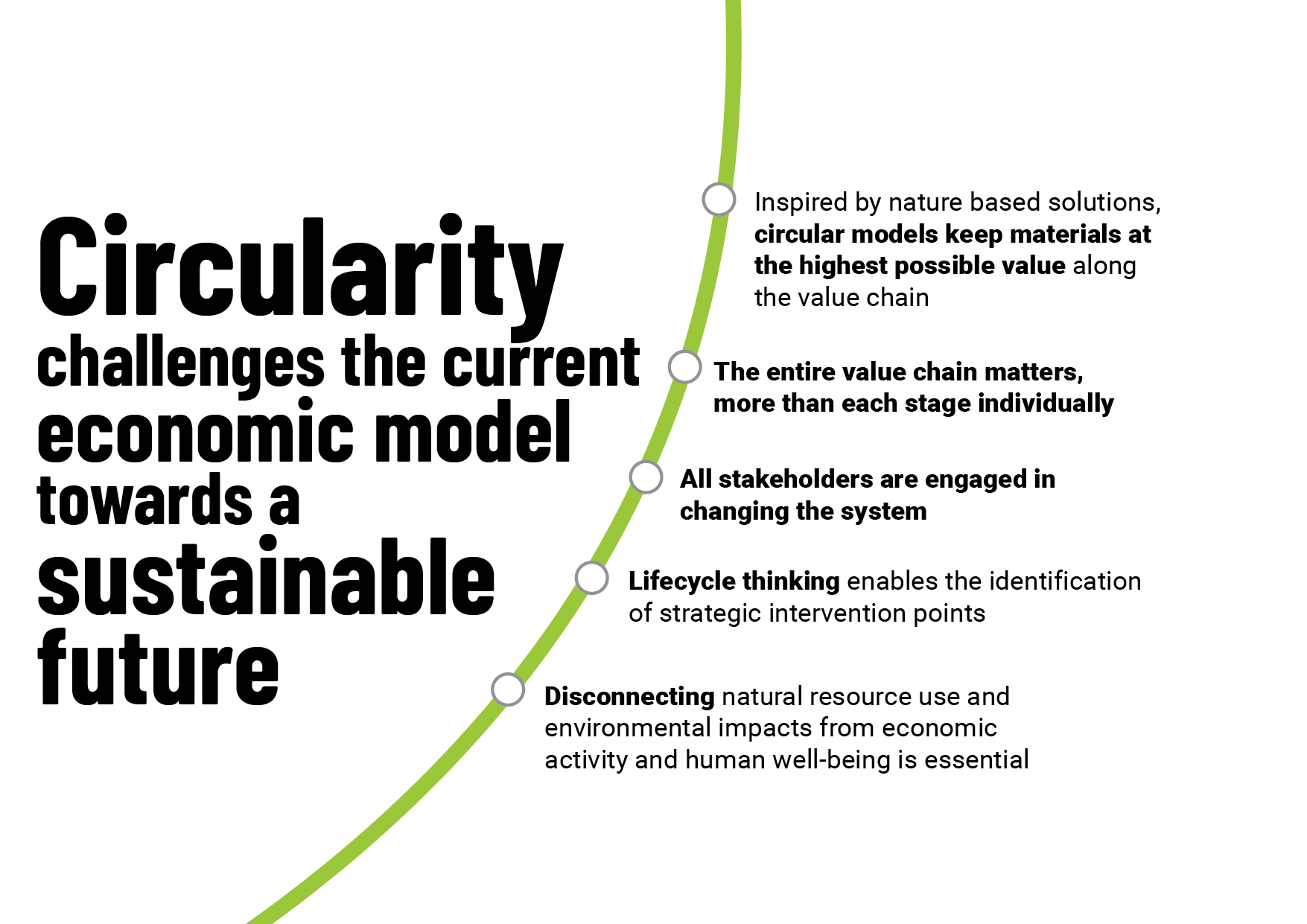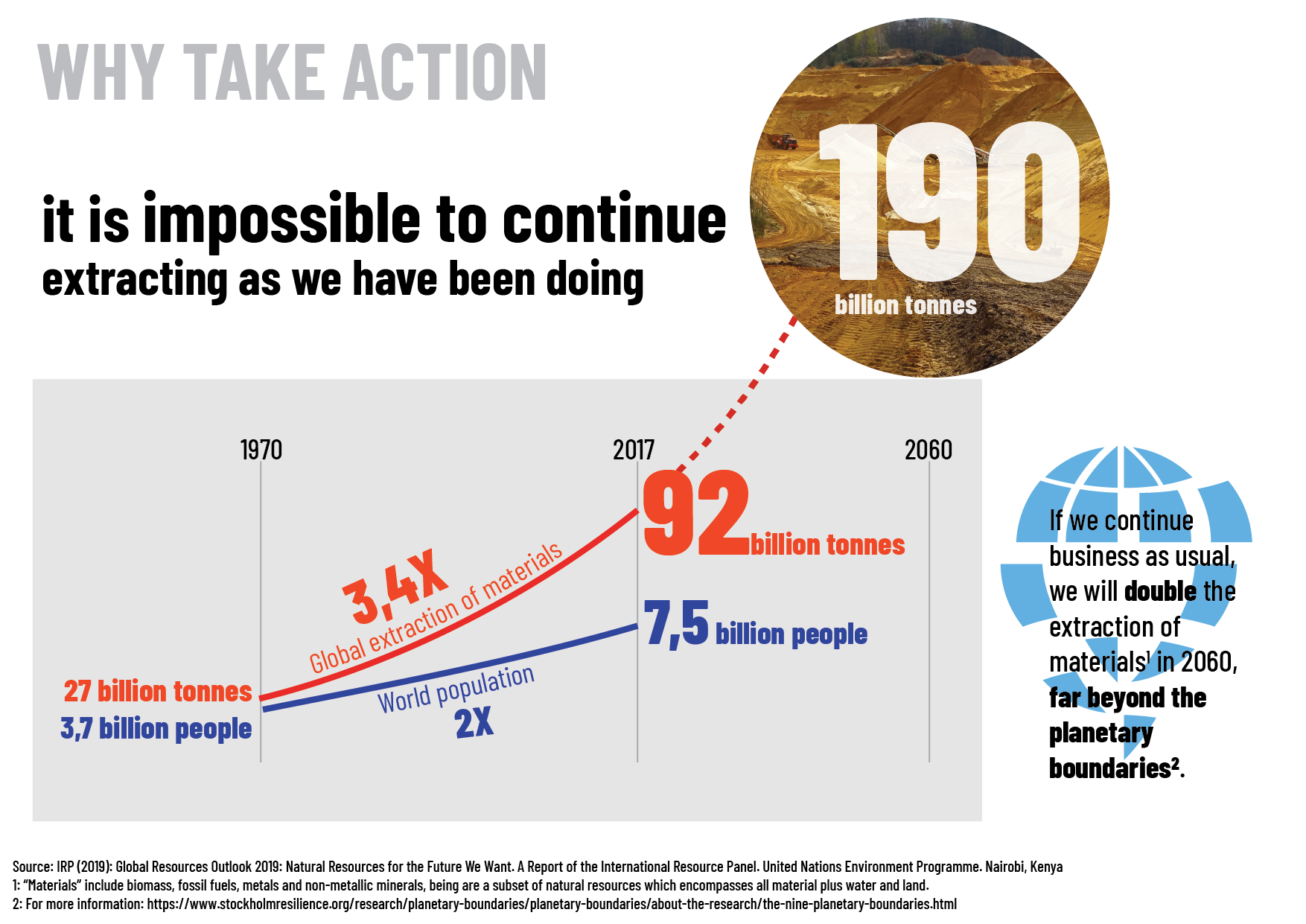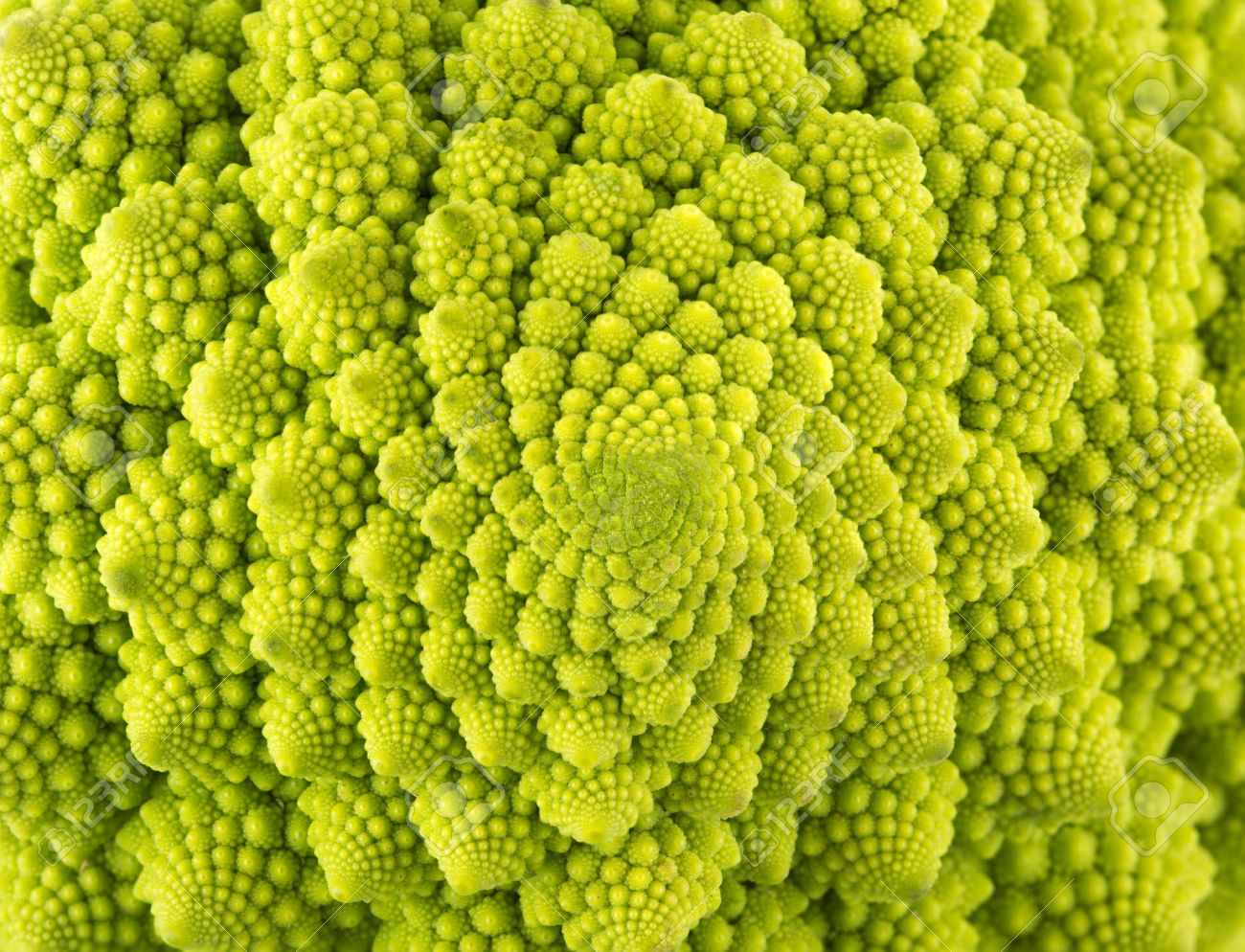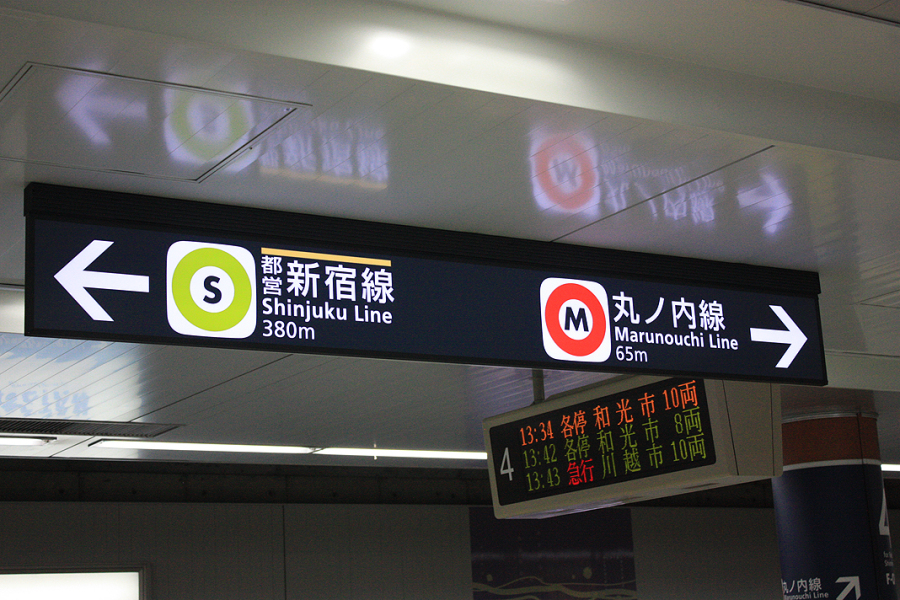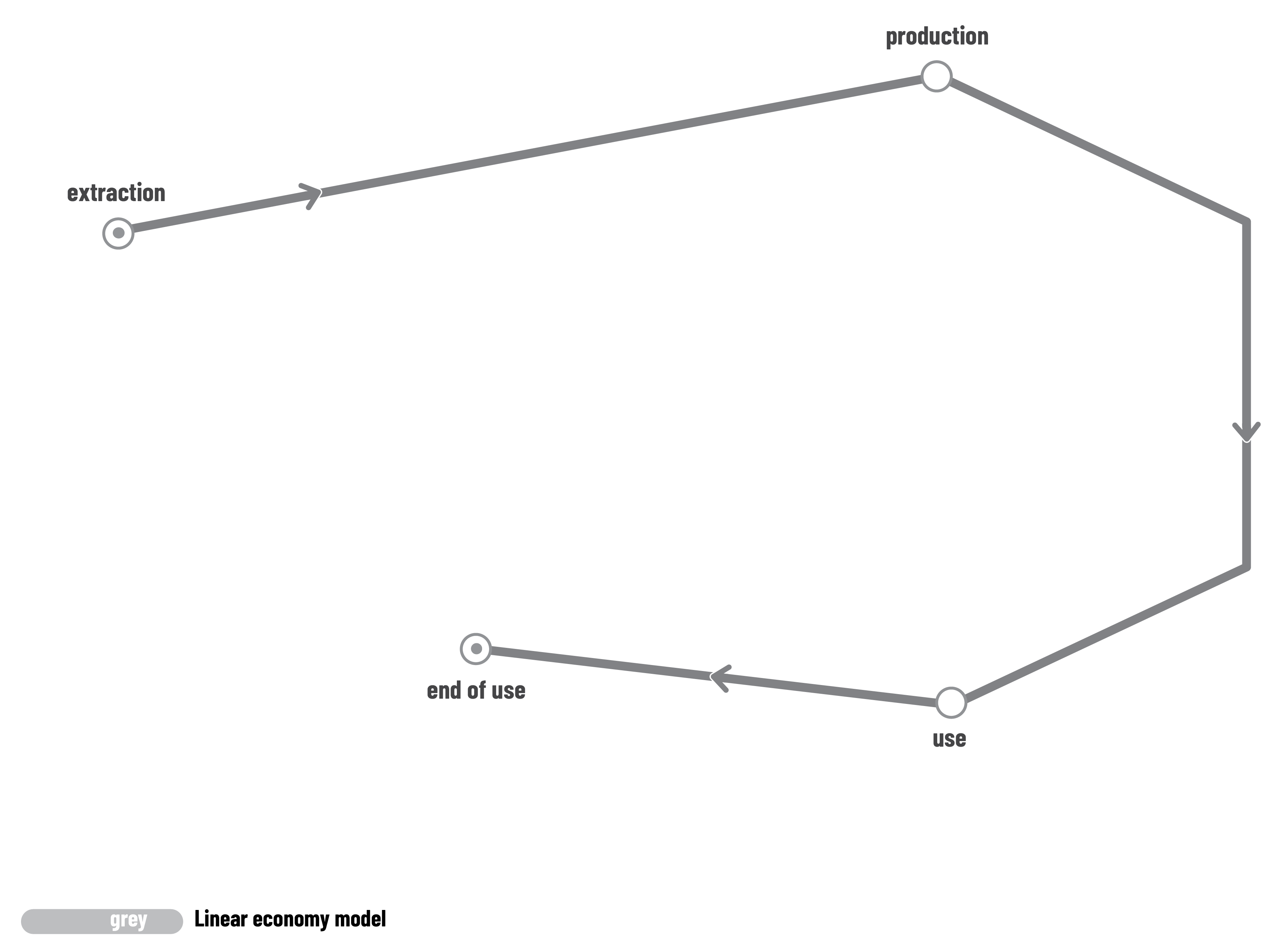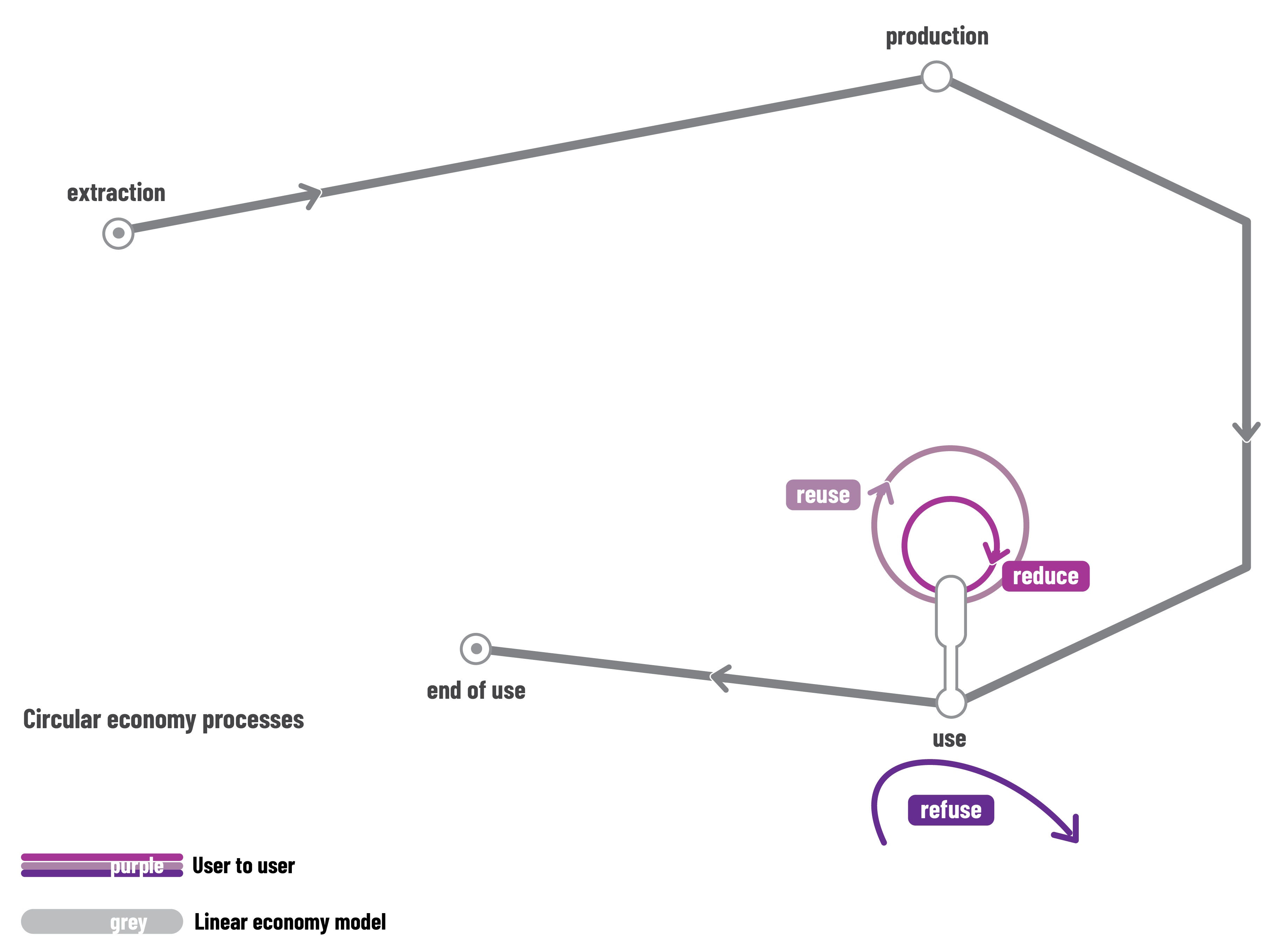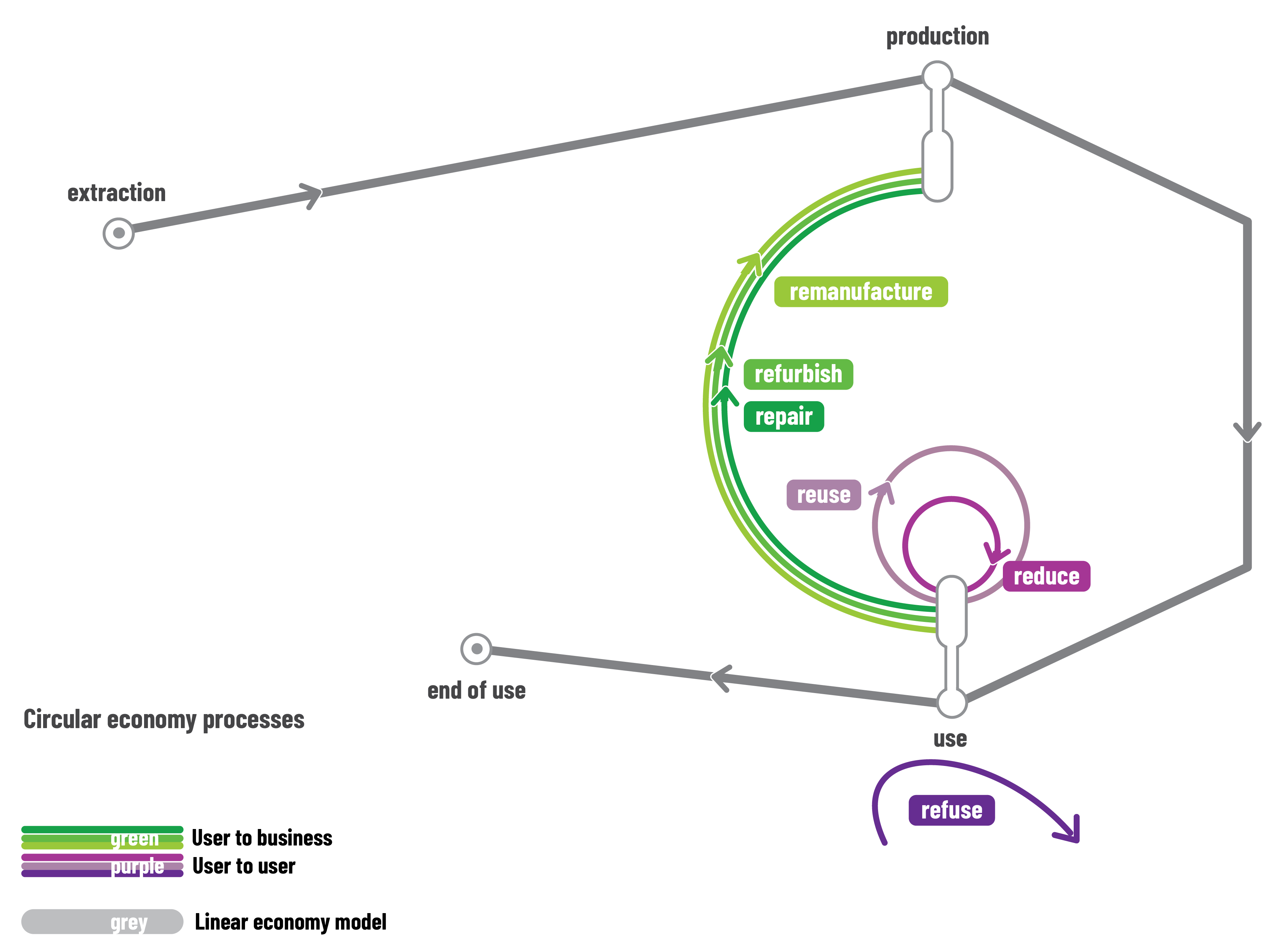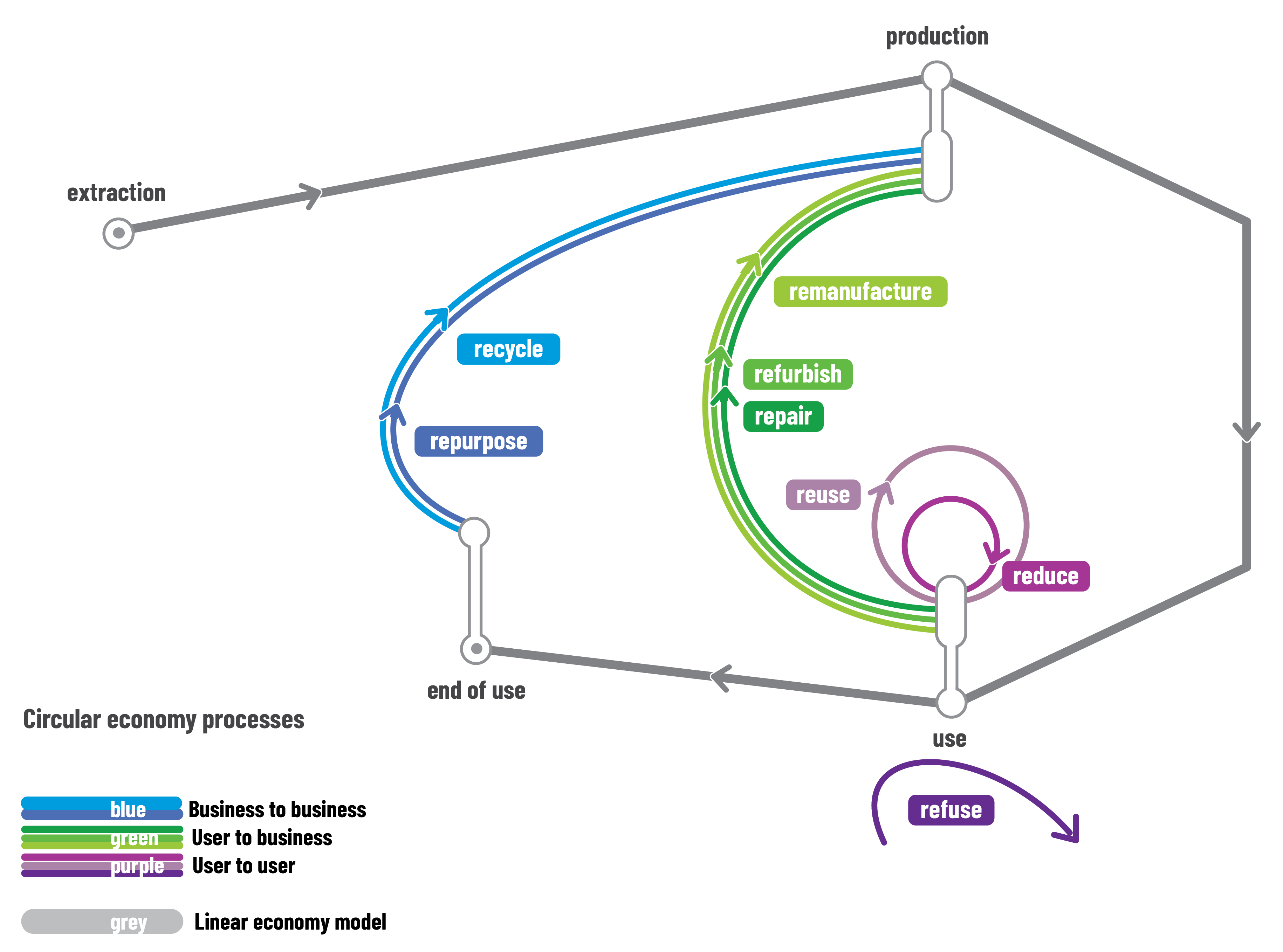Visualising circularity
This visualisation of circularity presented below builds upon these concepts.
Circularity as
ecology
cycle
nature
Circularity as
network
choices
interconnection
Building circularity in 4 steps
Circularity builds upon value retention loops:
- User-to-user processes: shorter loop, where a product or component remains close to its user and function
- User-to-business processes: medium/long loop, where a product or component is upgraded and producers involved again
- Business-to-business processes: Long loop, where a product or component loses its original function
Circular economy processes based on The circular economy: New or Refurbished as CE 3.0?
Processes
Circular processes contributing to circularity can be grouped into 4 categories, from the most impactful to the least:
1. Reduce by design: reducing the amount of material used, particularly raw material, should be applied as an overall guiding principle from the earliest stages of design of products and services
2. From a user-to-user perspective: Refuse, Reduce and Re-use
3. From a user-to-business intermediary perspective: Repair, Refurbish and Remanufacture
4. From business-to-business: Repurpose and Recycle.
Remining and recovery of energy are processes used in some countries to manage waste, but the value of the material is consumed once, and not put back into the loop. Therefore, these processes are not developed further on this platform
Click on each process below to learn more:

